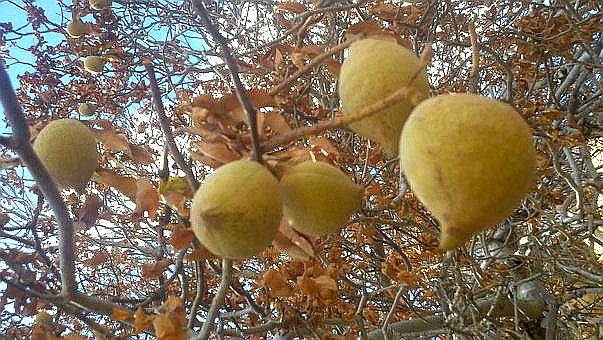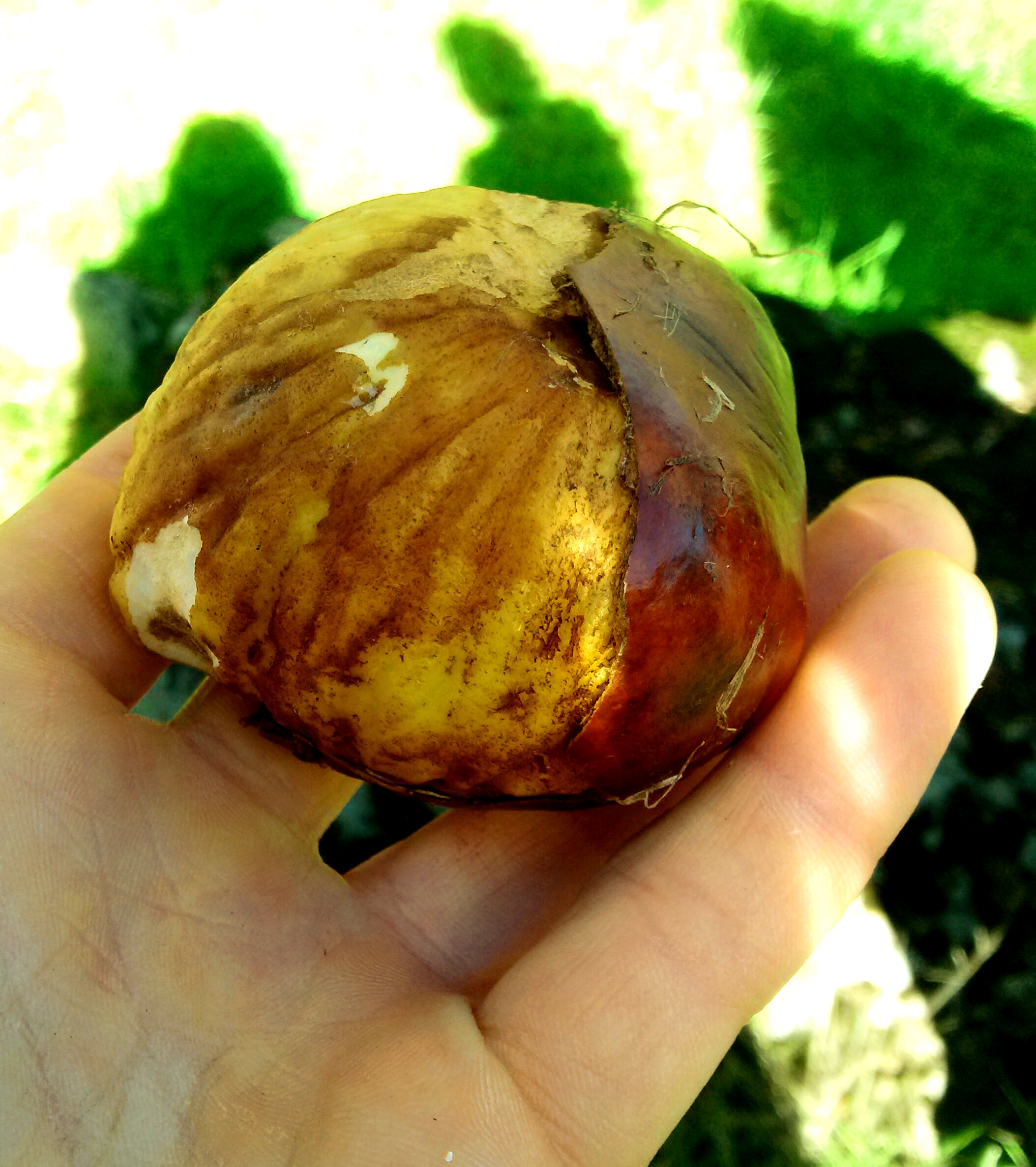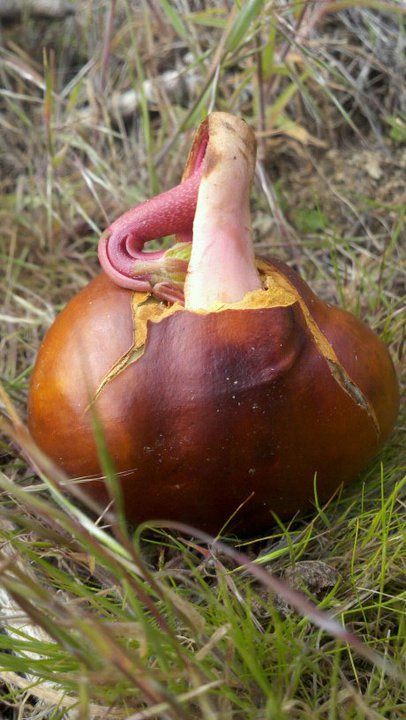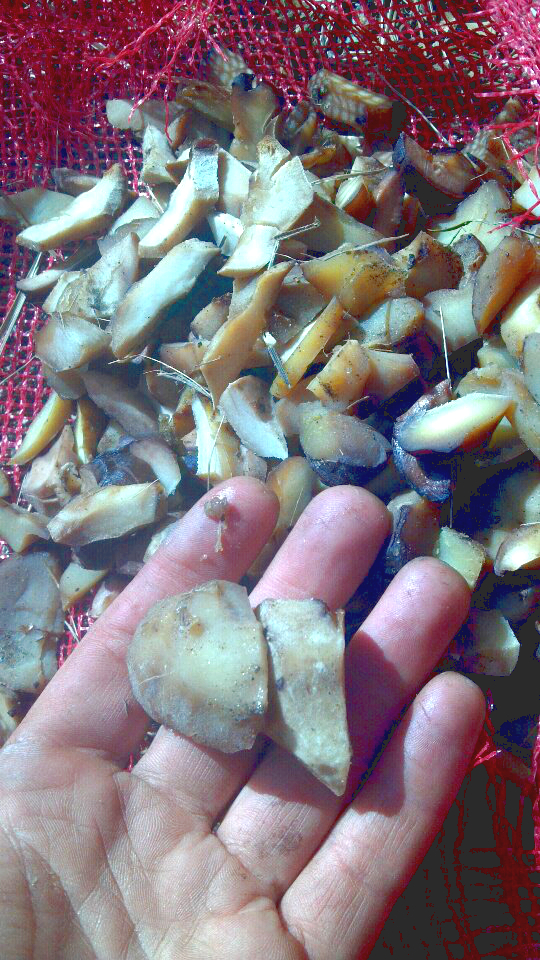California Buckeye on USDA.gov
Location Summary
Habitat & Range: A California native found in woodlands of the foothills & valleys of the Coast Ranges, Sierra Nevada, & Tehachapi Mountains. Can grow in riparian zones or on dry, hot slopes below
Elevation: 0 – 5,500 ft.
Identification Characteristics
Size: Either a large shrub or small tree. Mature plants are typically 3.5 m (12 ft) to 9 m (30 ft.) tall & 10 cm (4 in) to 15 cm (6 in.) in diameter. The largest grows in Walnut Creek & is 14.6 m (48 ft.) tall & 1.4 m (55 in.) in diameter.
Shape: Erect, single or multi-stemmed.
 Above: Crowns are flat topped to rounded & very broad. There is sufficient evidence that these trees were meticulously pruned as prized food sources among Native American peoples.
Above: Crowns are flat topped to rounded & very broad. There is sufficient evidence that these trees were meticulously pruned as prized food sources among Native American peoples.- Lifespan: At least 200 years.
Leaves: Deciduous, opposite, & palmately compound. Between 5 & 7 serrated, oblong to lance-shaped leaflets. Each leaflet is 7.5 cm (3 in.) to 15 cm (6 in.) long. Petioles are 1 cm (.4 in.) to 11 cm (4.5 in.) long. California Buckeye is a summer-deciduous, losing its leaves in mid to late summer.
Inflorescences: form erect, showy-clusters that measure 15 c. (6 in.) to 25 cm (10 in.) long.
Flowers:
 Above: The clustered flowers are arranged in a conical shape & are pinkish-white or cream to white color. They bloom May to July.
Above: The clustered flowers are arranged in a conical shape & are pinkish-white or cream to white color. They bloom May to July.
Fruits: In September, California Buckeyes can have many large, pendant (dangling), pear-shaped fruits.
Bark: Smooth & grayish-white.
Positive-Impact Harvesting Techniques
The tree sprouts from its base following injury. The nuts can be planted, & take quite well from sprouting.
Food, Utility, & Traditional Medicinal Uses
Food
CAUTION: All parts of this tree are toxic to humans, wildlife, & livestock if eaten raw! They contain glycosidal compounds (a chemical called “aesculen” that is also found in the name of the tree- “Aescules californica”) that affect red blood cells & the central nervous system.
The nuts, however, can be processed into a very nutritious food. To do so:
-
de-shell & then cut them into quarters.
-
Put them into a Steam Pit for 24 hours or until they have the consistency of boiled potatoes.
-
After slicing them into chips, put them into a burlap or nylon bag—or something similar which will allow running water to pass through—& then into a well-moving river to leach out the chemical Aesculen (which makes the nuts poisonous when raw).





